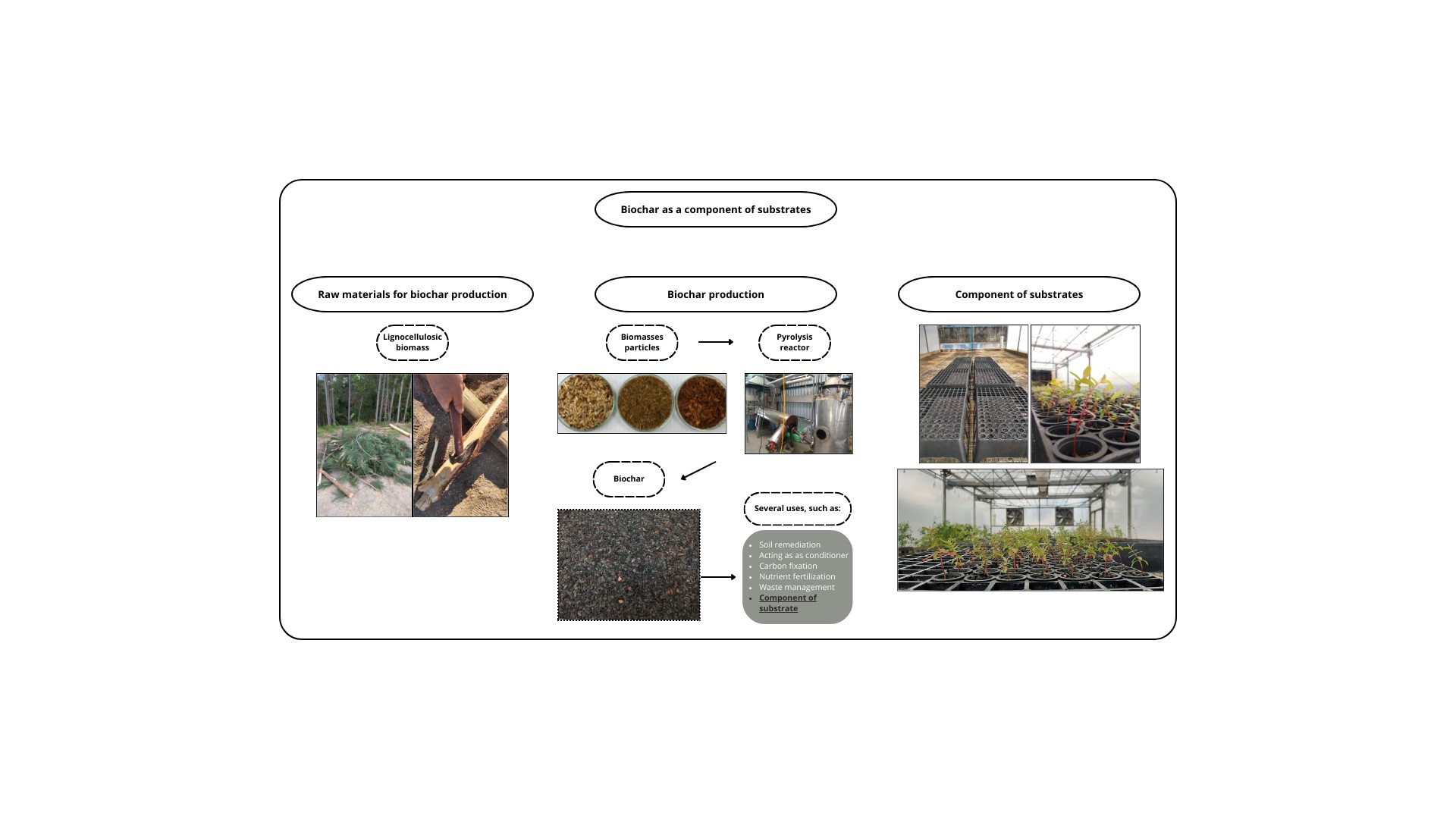Rev. Bras. Ciênc. Solo.2024;48:e0240027.
Use of biochar as a component of substrates in horticulture and forestry: A review
12/Dec/2024
DOI: 10.36783/18069657rbcs20240027
Graphical Abstract

Highlights
Biochar can be an effective component in soilless substrates.
Its use allows an alternative for reusing residues in addition to reducing production costs.
Biochar act as a conditioner, improving the physical and biological characteristics and improving plant quality and growth.
ABSTRACT
Plant production in nurseries, both in the forestry and horticultural sectors, has a large demand for substrates, making the use of natural resources such as peat high. The composition of substrates must not only have the necessary characteristics for good plant development, such as porosity, density, and water retention, but also look for sustainable and economical production. Biochar is a material derived from the processing of various organic residues which, due to its physical and chemical characteristics, presents great potential as a component of substrates for seedlings in nurseries. However, some issues still need to be resolved for this application, such as implementation costs, production process variables, feedstock origin and characterization, as well as the ideal proportions to be employed in formulations. To advance in these issues, we reviewed studies dealing with the different aspects of the use of biochar as a component of substrates. The literature suggests biochar can raise the quality of substrates, improve physical and chemical properties, contribute to waste management, and reduce production costs.
366

